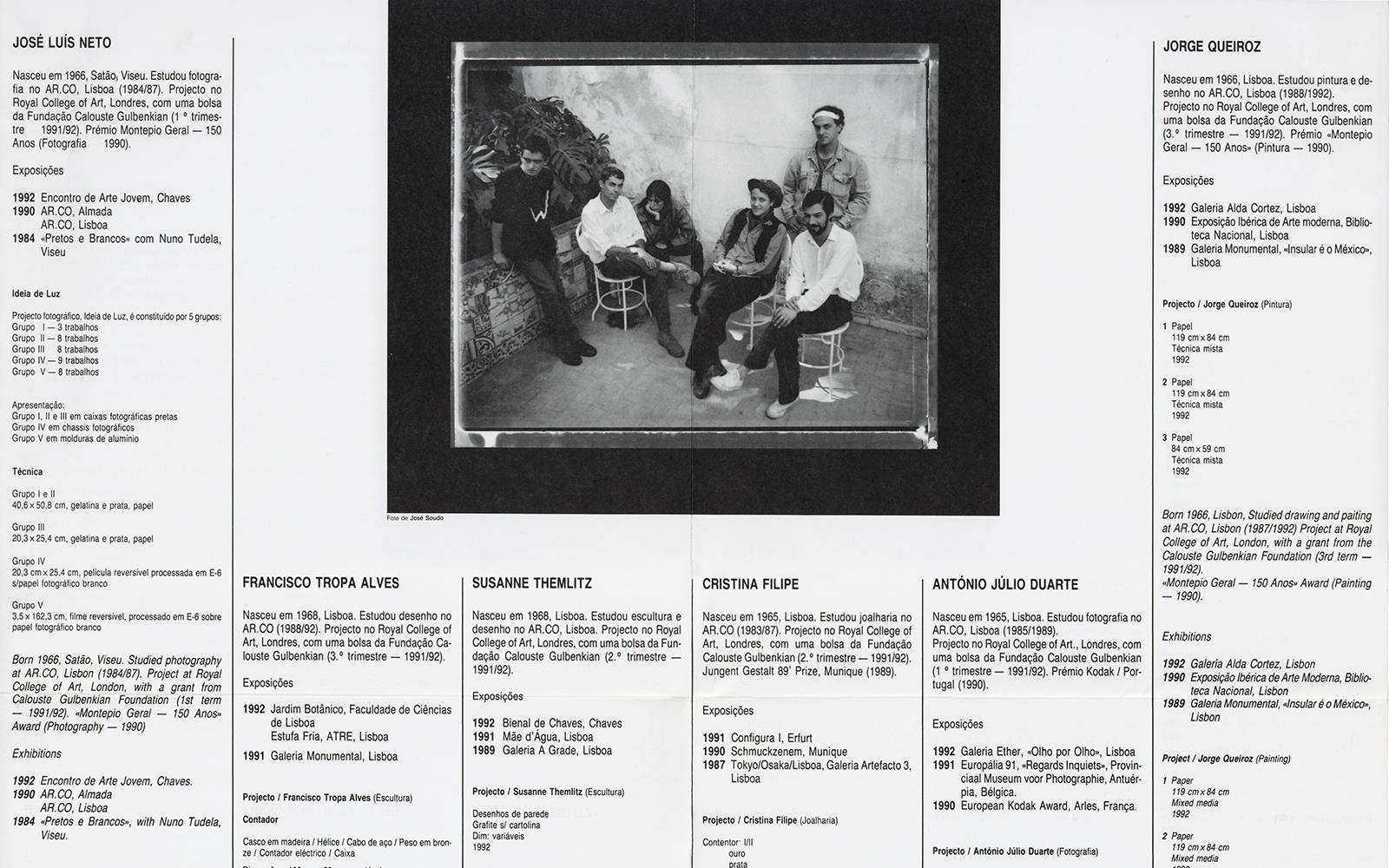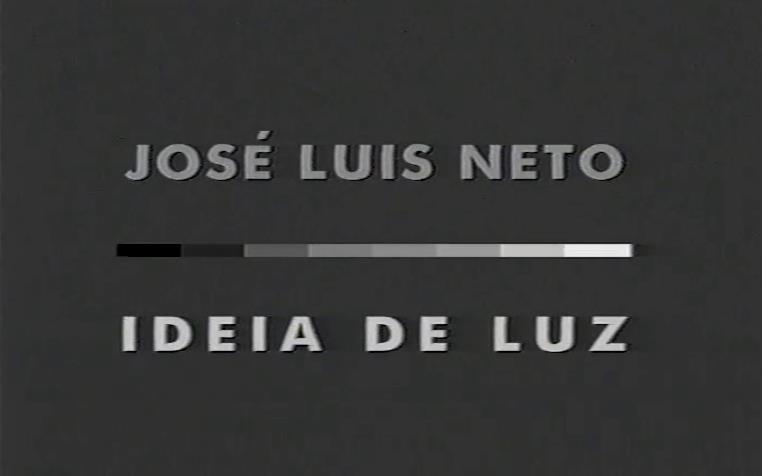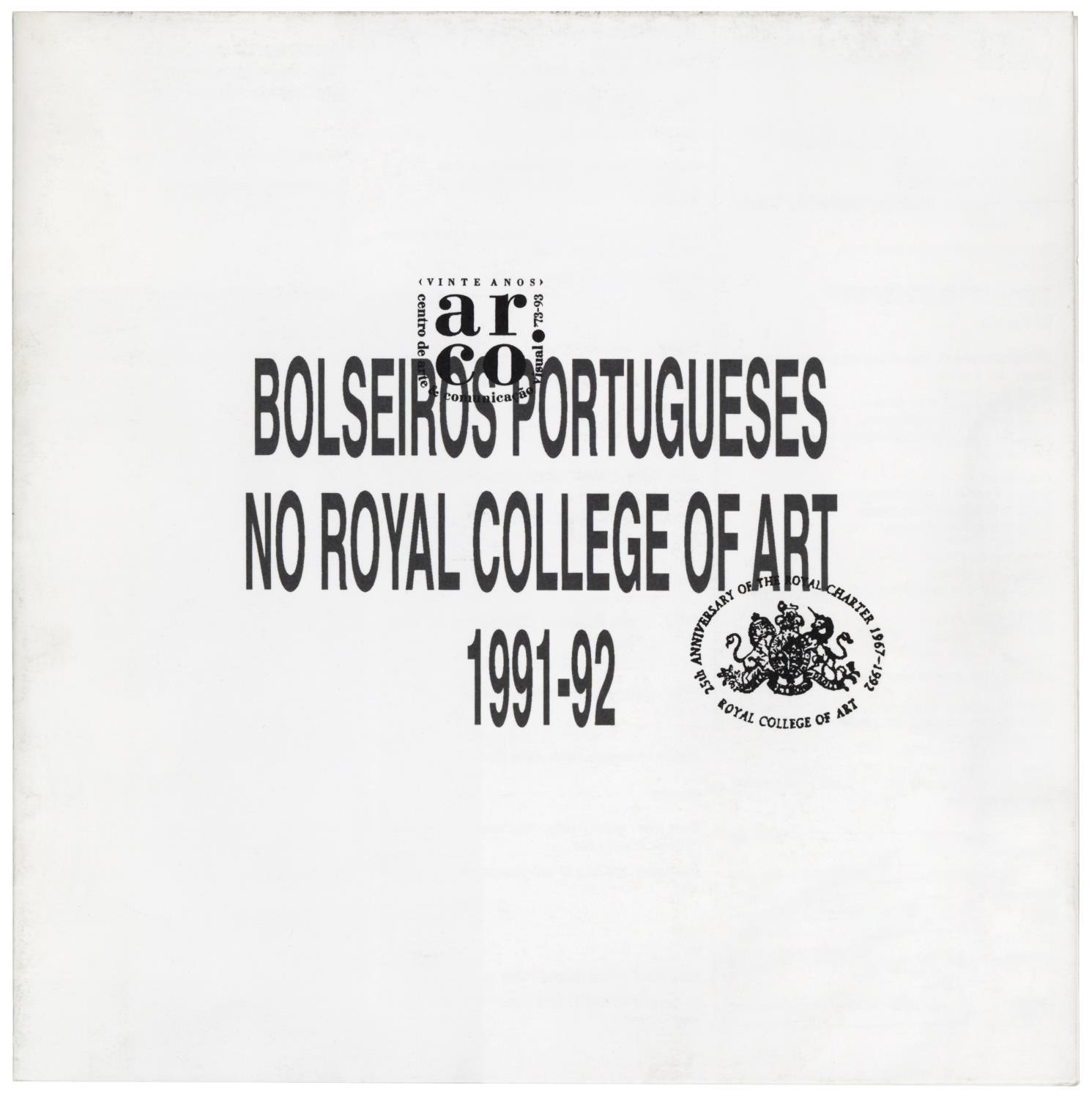
Bolseiros Portugueses no Royal College of Art, 1991 – 1992
Exposição coletiva de seis jovens artistas portugueses, organizada pelo Ar.Co (Centro de Arte e Comunicação Visual), em parceira com o Royal College of Arts de Londres e com o apoio da Fundação Calouste Gulbenkian. Estes artistas, na altura jovens alunos, correspondem atualmente a uma geração de artistas com carreiras já consolidadas a nível nacional e internacional.
Group show featuring six young Portuguese artists, organised by Ar.Co - Arts and Visual Communication Center, in partnership with the Royal College of Arts in London and with the support of the Calouste Gulbenkian Foundation. Young adults at the time of the exhibition, the artists are now well-established both nationally and internationally.
Ficha Técnica
- Iniciativa
- Organizador / Serviço responsável
- Organizador / Serviço envolvido
- Organizador / Parceiro institucional
- Programação
- Comissariado
Artistas / Participantes
Publicações

Multimédia
Periódicos
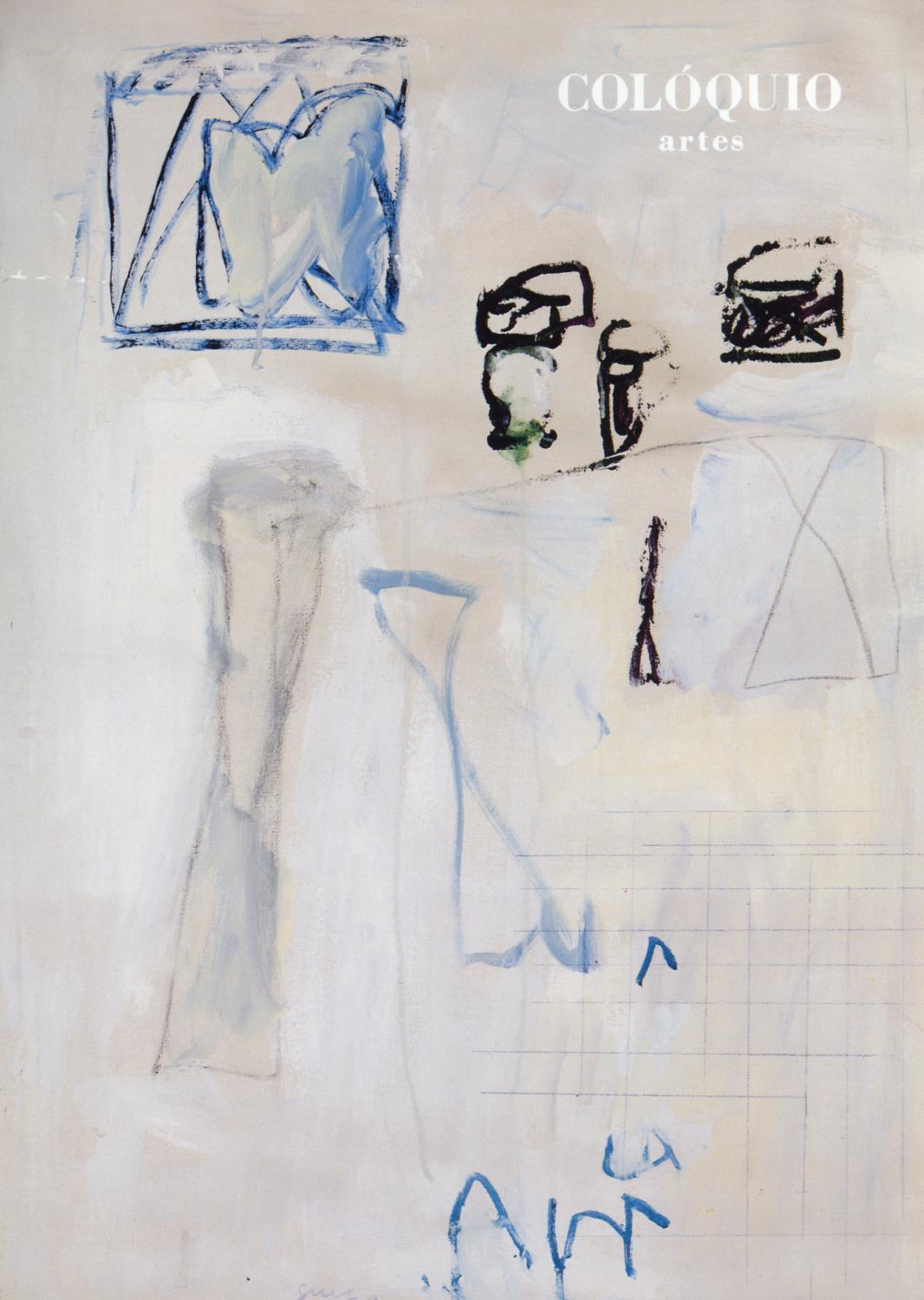
Colóquio. Artes
Lisboa, dez 1992
Fontes Arquivísticas
Exposições Relacionadas
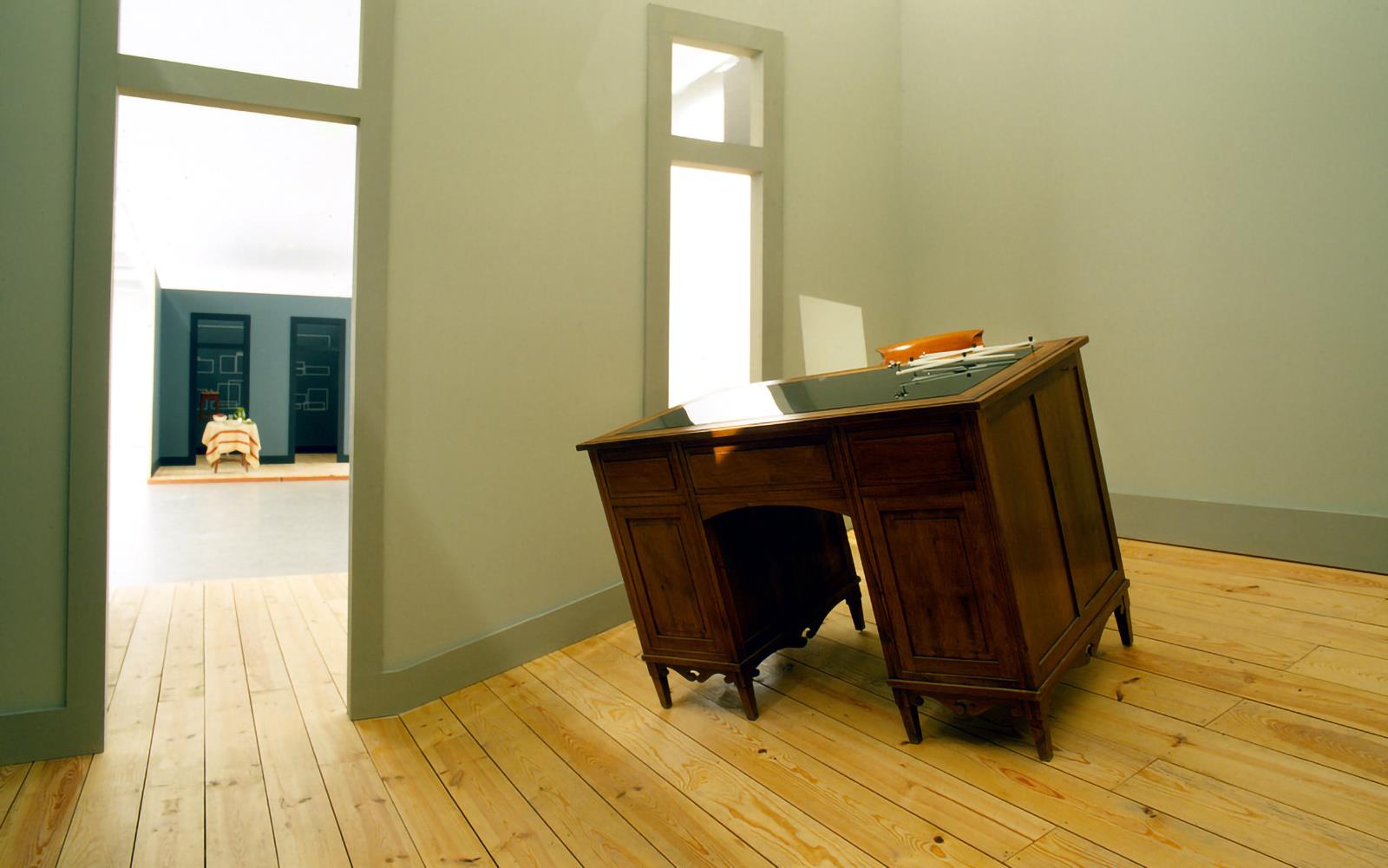
L'Orage
2003 / Centro de Arte Moderna, Lisboa
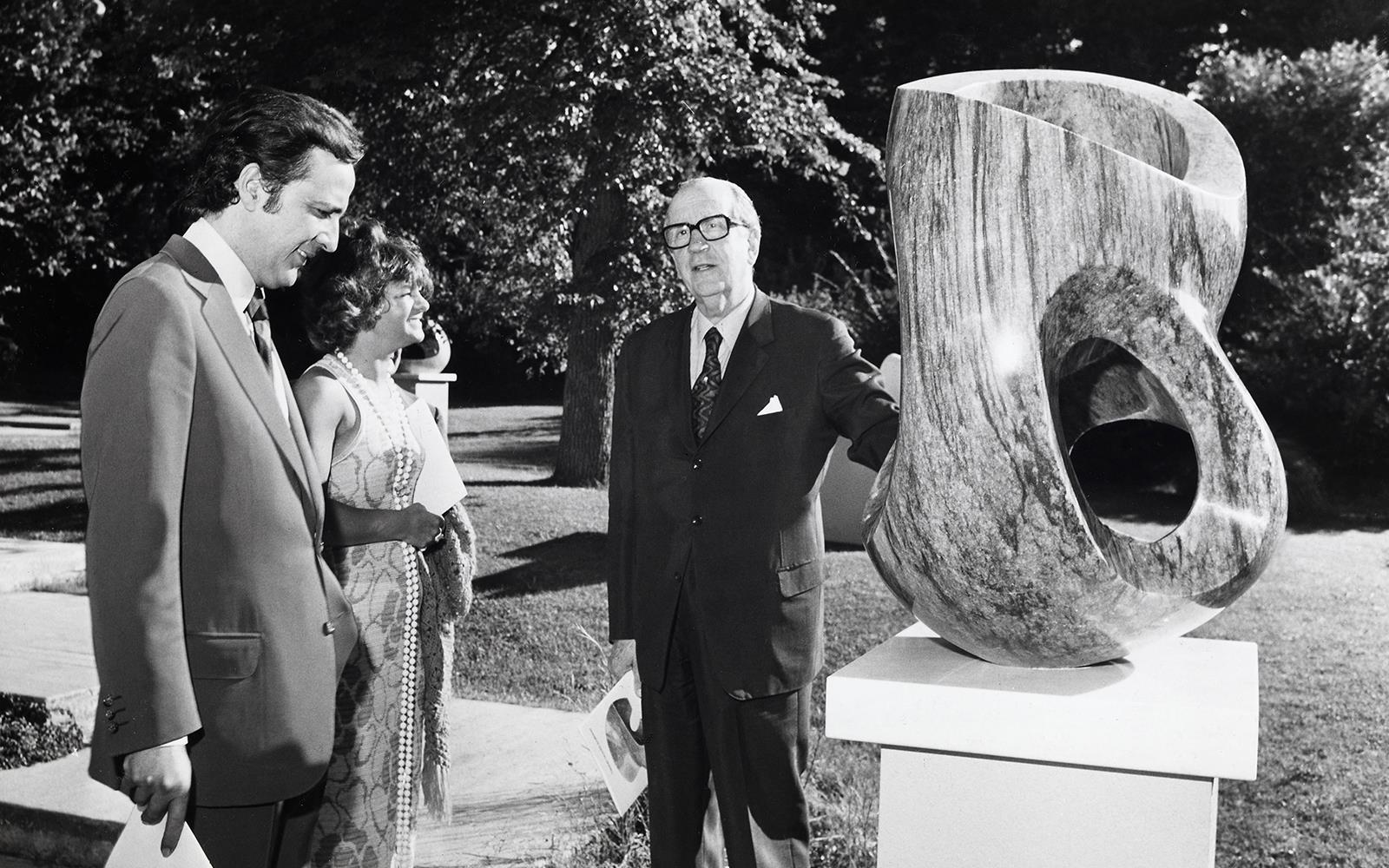
Dorita Castel-Branco
1973 / Jardim Fundação Calouste Gulbenkian, Lisboa

Eduardo Batarda
1975 / Sede Fundação Calouste Gulbenkian, Lisboa
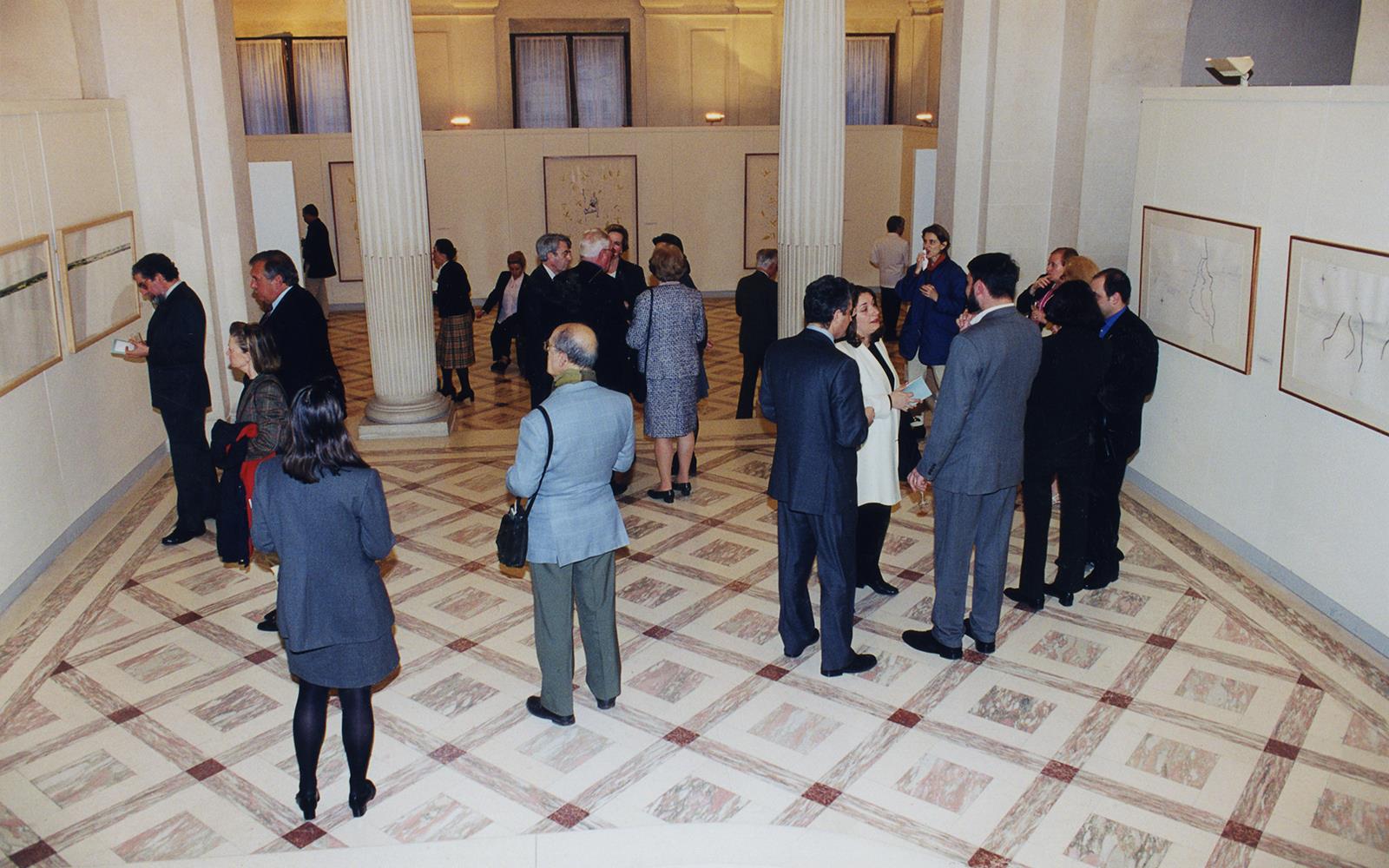
Alexandre Conefrey. Œuvres sur Papier
1999 / Centre Culturel Calouste Gulbenkian, Paris

José Luís Neto. Continuum
2005 – 2006 / Centro de Arte Moderna, Lisboa

Eurico Lino do Vale. Nova Geração
2001 – 2002 / Centro de Arte Moderna, Lisboa

